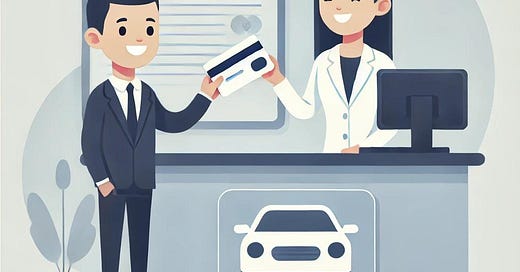3 Steps to Navigate the Rental Car Counter with a Premium Credit Card
How to use your rental car insurance through your credit card
Many credit cards offer primary rental car insurance, covering damage or theft directly without involving your personal auto insurance. Below is a list of popular cards with this benefit, including links to their benefit guides for easy access:
Capital One Venture X ($395)
Chase Sapphire Preferred / Reserve ($95 / $550)
Expedia OneKey / OneKey+ ($0 / $99)
BILT ($0)
Note: All American Express cards provide secondary rental car insurance by default, meaning it only covers what your personal car insurance does not. However, if you don’t have car insurance, secondary insurance typically acts as your primary coverage.
3-Step Process for Rental Car Insurance
When picking up your rental car, follow this 3-step process to manage your insurance options effectively:
Decline the Collision Damage Waiver (CDW)
Also known as the Loss Damage Waiver (LDW), this coverage is typically unnecessary if your credit card offers primary rental car insurance. Check your credit card’s benefit guide for specific terms and conditions, but most cards provide coverage up to $75,000.
Add or Confirm Liability Coverage
If you don’t have car insurance:
Purchase liability insurance through the rental car company, which protects you damage others’ property or vehicles in an accident. Liability insurance is usually under $20/day.
Consider third-party options like Bonzah, which often offers liability coverage at a lower cost than rental car companies.
If you do have car insurance:
Check whether your policy includes liability coverage for rental cars. If it does, you may still want to purchase additional liability coverage to avoid filing a claim and potentially increasing your premiums.
Consider Optional Coverage
Optional coverages like Personal Accident Insurance (PAI) cover medical costs for you and your passengers. If you already have medical insurance in the area you’re driving, it’s typically safe to decline this option.
And that’s it! Just remember: always ensure you have a damage waiver and liability insurance in place before driving off the lot—both are absolute musts for peace of mind.





